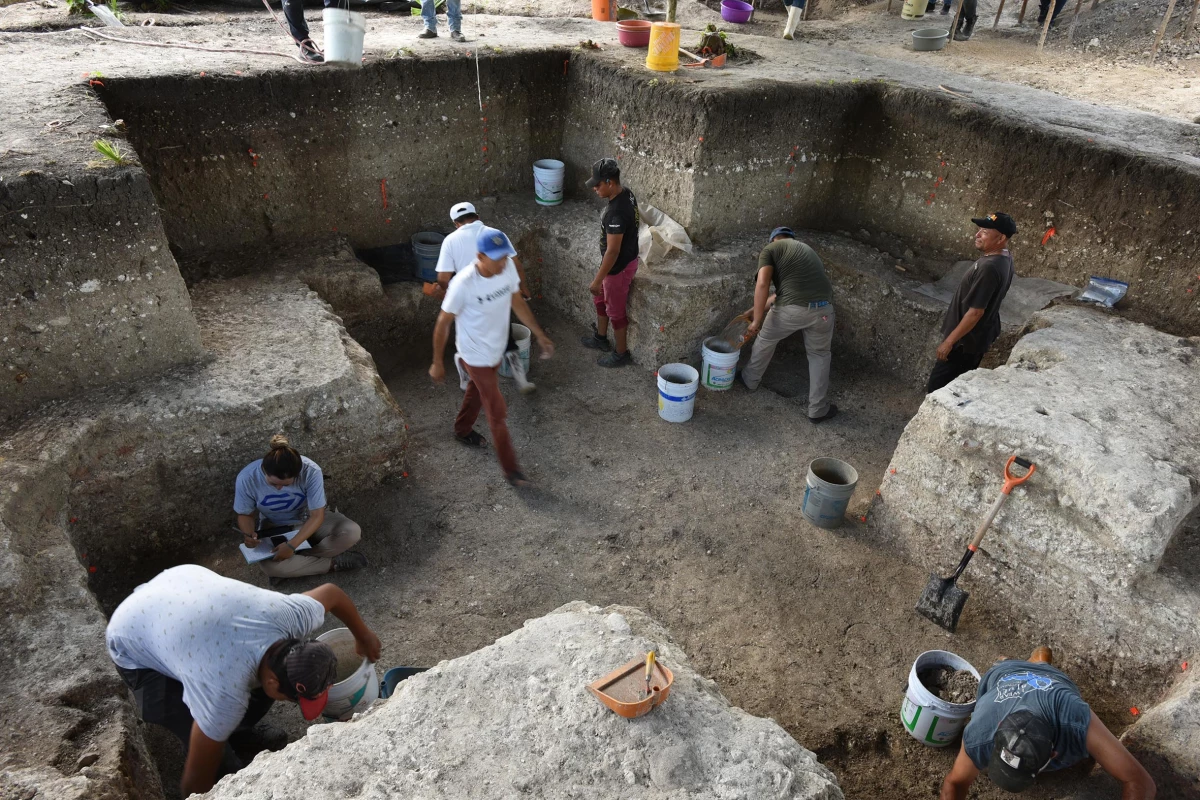Science
Ancient Maya Monument Discovery Challenges Historical Narratives

A groundbreaking archaeological discovery in the Maya region is reshaping our understanding of ancient civilizations. The site known as Aguada Fénix, located in Tabasco, Mexico, features a monumental structure dating back to 1000 BCE. This platform, nearly a mile long, is now recognized as the largest known monument within the Maya world, prompting experts to reconsider the social dynamics that facilitated such monumental construction.
Historically, archaeologists believed that large-scale building projects necessitated strong hierarchical societies led by powerful figures, such as kings and priests. However, recent excavations at sites including Ceibal, Cival, Yaxnohcah, and Xocnaceh demonstrated that early Maya life was more complex than previously thought. The discovery of Aguada Fénix, with its intricate design and construction, challenges the notion that such achievements were exclusively the result of centralized authority.
In a study published in the journal Science Advances, an international team of researchers, led by Takeshi Inomata from the University of Arizona, posits that Aguada Fénix served not merely as a monumental platform but as a “cosmic map” reflecting the spiritual beliefs of the early Maya. This interpretation stems from the careful analysis of the site’s layout and the artifacts uncovered there.
The significance of Aguada Fénix became clear in 2020 when it was first unearthed. It has since been associated with a series of nearly 500 smaller sites across southeastern Mexico, suggesting a broader network of communal rituals and architectural endeavors. Recent digs at Aguada Fénix revealed a cruciform pit filled with ceremonial treasures, including jade axes and intricate carvings depicting animals and human figures. These findings provide valuable insights into the rituals that were integral to early Maya culture.
The dating of the cruciform pit, confirmed through radiocarbon analysis, indicates that it was used between 900 and 845 BCE. Inomata highlights that the discovery of colored soils—specifically blue, green, and yellow—arranged to align with the four cardinal directions represents a significant finding. “We’ve known that there are specific colors associated with specific directions,” Inomata stated. “But we never had actual pigment placed in this way.”
The implications of this research extend beyond the historical narrative of the Maya. Inomata argues that these findings contradict the long-held belief that Mesoamerican cultures developed gradually through the construction of increasingly larger settlements. He emphasizes the importance of Aguada Fénix, which predates iconic sites such as Tikal and Teotihuacan by nearly a millennium, challenging the perception of societal organization in the region.
Using advanced lidar technology, Inomata’s team initially identified Aguada Fénix, leading to further investigations that revealed complexes of raised causeways, sunken corridors, and extensive water canals. These structures, extending up to 9.7 kilometers, exhibit a remarkable alignment with the solar orientation of the monument.
The absence of overt royal authority at Aguada Fénix suggests that its builders were likely not governed by kings, but rather by a collective of thinkers and planners who integrated astronomical knowledge into their construction practices. Inomata asserts that this challenges modern assumptions about the necessity of social inequality for the achievement of significant communal projects. “Once you see the actual data from the past, it was not like that,” he explained. “So, we don’t need really big social inequality to achieve important things.”
The artistry found at Aguada Fénix also departs from the typical glorification of rulers seen in Olmec sculptures. Instead, the carvings reflect everyday life, portraying animals and human figures that resonate with the community’s shared experiences. Xanti S. Ceballos Pesina, a co-author of the study, expressed astonishment at the scale of Aguada Fénix, remarking on how it remained hidden from researchers for so long. “New technologies are helping to discover these new types of architectural arrangements,” she noted.
As archaeological work continues, Aguada Fénix stands as a testament to the collaborative spirit of the early Maya, showcasing what can be accomplished when communities unite for a common purpose. The findings from this site not only enhance our understanding of ancient Mesoamerican societies but also offer valuable lessons for contemporary communities about the potential for collective action without reliance on hierarchical structures.
-

 Science4 weeks ago
Science4 weeks agoInventor Achieves Breakthrough with 2 Billion FPS Laser Video
-

 Health1 month ago
Health1 month agoCommunity Unites for 7th Annual Into the Light Walk for Mental Health
-

 Top Stories1 month ago
Top Stories1 month agoCharlie Sheen’s New Romance: ‘Glowing’ with Younger Partner
-

 Entertainment1 month ago
Entertainment1 month agoDua Lipa Aces GCSE Spanish, Sparks Super Bowl Buzz with Fans
-

 Business1 month ago
Business1 month agoTyler Technologies Set to Reveal Q3 Earnings on October 22
-

 Entertainment1 month ago
Entertainment1 month agoMother Fights to Reunite with Children After Kidnapping in New Drama
-

 World1 month ago
World1 month agoR&B Icon D’Angelo Dies at 51, Leaving Lasting Legacy
-

 Health1 month ago
Health1 month agoCurium Group, PeptiDream, and PDRadiopharma Launch Key Cancer Trial
-

 Entertainment1 month ago
Entertainment1 month agoRed Sox’s Bregman to Become Free Agent; Tigers Commit to Skubal
-

 Health1 month ago
Health1 month agoNorth Carolina’s Biotech Boom: Billions in New Investments
-

 Science1 month ago
Science1 month agoNorth Carolina’s Biotech Boom: Billions Invested in Manufacturing
-

 Health1 month ago
Health1 month agoYouTube Launches New Mental Health Tools for Teen Users









